Volume 56, Issue 4
Displaying 1-13 of 13 articles from this issue
- |<
- <
- 1
- >
- >|
ORIGINALS
-
2006 Volume 56 Issue 4 Pages 295-302
Published: 2006
Released on J-STAGE: December 26, 2006
Download PDF (428K) -
2006 Volume 56 Issue 4 Pages 303-312
Published: 2006
Released on J-STAGE: December 26, 2006
Download PDF (417K) -
2006 Volume 56 Issue 4 Pages 313-319
Published: 2006
Released on J-STAGE: December 26, 2006
Download PDF (390K) -
2006 Volume 56 Issue 4 Pages 319-328
Published: 2006
Released on J-STAGE: December 26, 2006
Download PDF (454K)
CASE REPORTS
-
2006 Volume 56 Issue 4 Pages 329-337
Published: 2006
Released on J-STAGE: December 26, 2006
Download PDF (917K) -
2006 Volume 56 Issue 4 Pages 339-342
Published: 2006
Released on J-STAGE: December 26, 2006
Download PDF (142K) -
2006 Volume 56 Issue 4 Pages 343-346
Published: 2006
Released on J-STAGE: December 26, 2006
Download PDF (328K)
STREAM
-
2006 Volume 56 Issue 4 Pages 347-348
Published: 2006
Released on J-STAGE: December 26, 2006
Download PDF (221K) -
2006 Volume 56 Issue 4 Pages 349-350
Published: 2006
Released on J-STAGE: December 26, 2006
Download PDF (303K)
ABSTRACTS
-
2006 Volume 56 Issue 4 Pages 351-355
Published: 2006
Released on J-STAGE: December 26, 2006
Download PDF (411K) -
2006 Volume 56 Issue 4 Pages 357-359
Published: 2006
Released on J-STAGE: December 26, 2006
Download PDF (294K) -
2006 Volume 56 Issue 4 Pages 361-372
Published: 2006
Released on J-STAGE: December 26, 2006
Download PDF (700K)
EDITOR’S POSTSCRIPT
-
2006 Volume 56 Issue 4 Pages 373
Published: November 01, 2006
Released on J-STAGE: July 23, 2015
Download PDF (109K)
- |<
- <
- 1
- >
- >|
